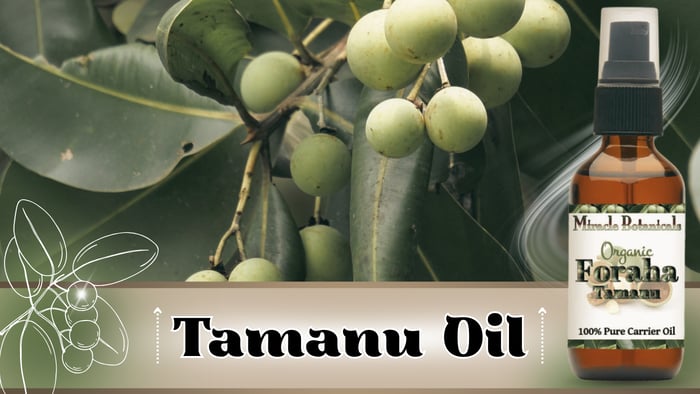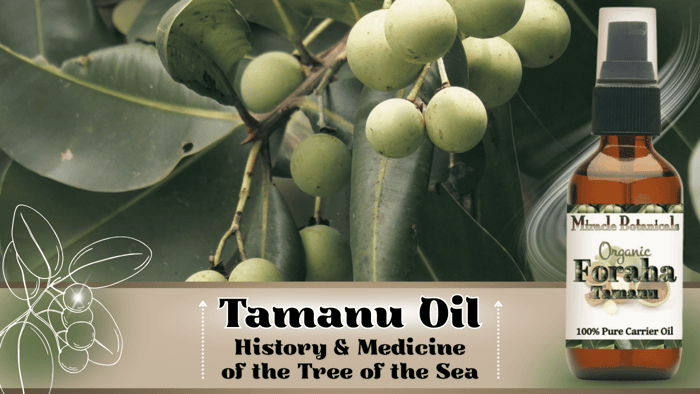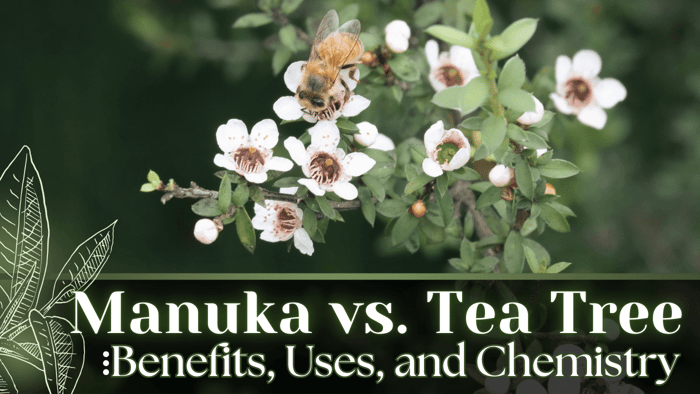Table of Contents
Tamanu Oil (Foraha): The Sacred Healing Oil of the Sea
Used for centuries across Polynesia, Madagascar, and Southeast Asia, Tamanu oil — also known as Foraha or Kamani — is a thick, green elixir pressed from the nut of the Calophyllum inophyllum tree. This remarkable oil has been revered for its:
- Deep skin-rejuvenating properties
- Natural wound-healing and scar-fading powers
- Energetic grounding and spiritual protection
This coastal tree thrives where ocean meets land, withstanding salt, wind, and sun — embodying resilience, protection, and renewal. Its oil carries that same spirit.
Cultural Roots & Sacred Uses
Tamanu oil is more than just skincare — it's a sacred gift with rich cultural history:
- In Polynesia, it was known as a "sacred oil," used for burns, sun damage, and spiritual healing
- In Madagascar (Foraha), it was applied for rheumatism, wounds, and skin ailments
- In Melanesia, it was massaged into skin for energetic protection
- In Hawaii (Kamani), it was revered for both its healing oil and wood — used in canoe-making and carving
Its presence near temples and sacred sites speaks to its role as a guardian tree, both physically and spiritually.
The Traditional Extraction Process
Crafted with patience and intention, Tamanu nuts undergo a traditional, slow extraction:
- Harvested by hand after nuts naturally fall
- Sun-dried for weeks, allowing compounds to activate
- Cold-pressed to preserve nutrients and bioactives
- Settled and gently filtered, keeping its rich, green potency intact
It takes 100 kg of fruit to yield just 5 kg of oil, making this one of the most precious botanical oils on Earth.
Key Compounds in Tamanu Oil
Tamanu's powerful effects come from its rare mix of bioactive compounds:
- Caloophyllolide – anti-inflammatory and antimicrobial
- Inophyllum A, B, C, E – antioxidants with antiviral potential
- Oleic Acid (Omega-9) – supports elasticity and skin regeneration
- Linoleic Acid (Omega-6) – balances oily skin and restores barrier
- Lactones & Polyphenols – antifungal, antibacterial, and anti-aging
- Phytosterols & Resins – repair skin and protect against stressors
Skin Benefits of Tamanu Oil
Tamanu oil supports various skin concerns:
- Wound & scar healing – including acne scars and stretch marks
- Acne relief – antibacterial and gentle on skin
- Eczema & psoriasis – soothes inflammation and itchiness
- Anti-aging benefits – rich in antioxidants to smooth fine lines
- Sun recovery – calms burns and offers natural UV protection (SPF ~18–22)
Hair & Scalp Care
The oil of tamanu nuts provide excellent benefits for hair health:
- Moisturizes dry scalp and reduces dandruff
- Supports healthy hair growth and soothes irritation
Massage a few drops into the scalp or add to shampoo for best results.
Holistic & Therapeutic Uses
Traditional medicine has utilized Tamanu oil for various purposes:
- Joint and muscle relief – traditionally used for inflammation and circulation
- Antifungal action – helps with athlete's foot, ringworm, and nail fungus
- Bug bites & stings – reduces swelling, itching, and speeds repair
- Energetic clearing – used in rituals for grounding, anointing, and spiritual protection
Usage Tips and Safety
- Safe for most skin types, but always patch test first
- Can be used neat or diluted with a carrier oil
- Not for internal use
- Use caution with tree nut allergies
Sustainability Matters
Because Tamanu is slow to produce and in high demand, always choose:
- Cold-pressed, unrefined oil
- Sustainably and ethically sourced products
- Community-supported or fair trade suppliers
Miracle Botanicals offers farmed Foraha oil from Vietnam, lovingly sourced and bottled to preserve the integrity of this sacred plant.
Conclusion
Tamanu oil isn't just skincare—it's a living tradition, a bridge to ancestral wisdom, and a reminder that nature truly heals, body and soul. This precious oil continues to offer the same benefits that Pacific Island cultures have treasured for generations.
Want to explore the full story of this special oil? Click here to read the complete deep dive →
Tamanu Oil - Foraha - Kamani - Organic (Calophyllum Inophyllum)

$21.97
Botanical Name: Calophyllum Inophyllum Plant Part: Nut Method of Extraction: Cold Pressed, Unfiltered Country of Origin: Vietnam Color/Consistency: Green and Somewhat Thick with Small White Fat Granules that Melt Immediately into the Skin Aroma: Sweet, Earthy, Nutty … read more






